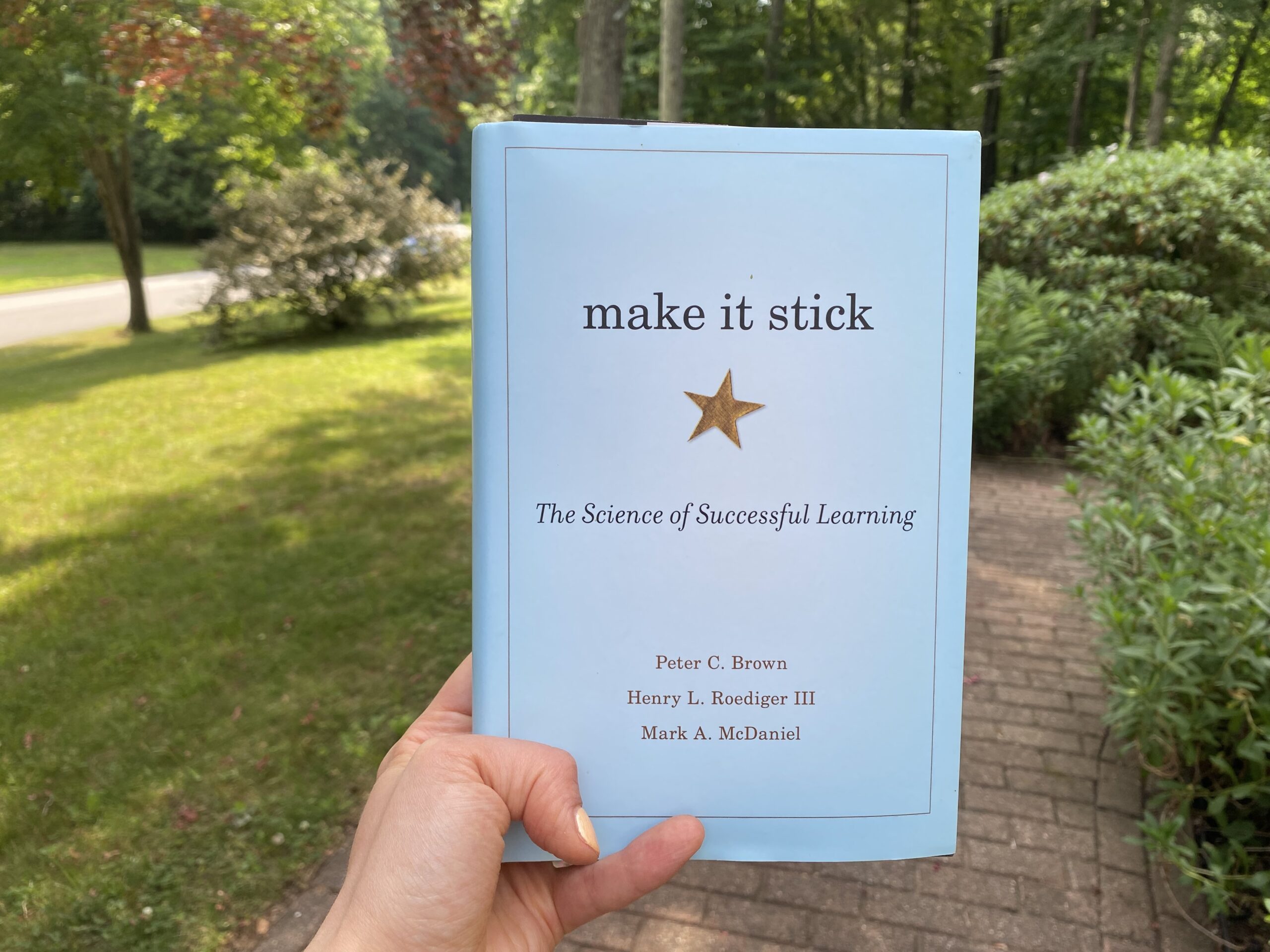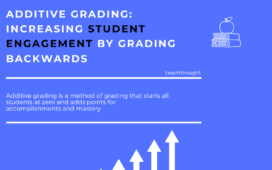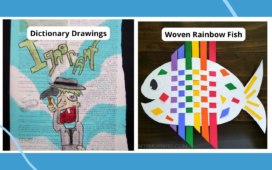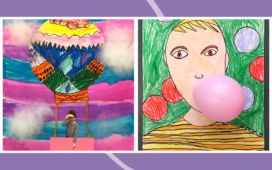
As the 2023-2024 school year draws to a close, many teachers (myself included) are left wondering what our students will take from their time in our classrooms. Surely feelings of inclusion, kindness, and community … but hopefully some of that content knowledge we worked so hard to impart too.
I, for one, made it my hill to die on that my 7th grade science students would identify independent, dependent, and controlled variables. Some ended the year with the skill under their belt. Undoubtedly, others will enter 8th grade science and claim they remember those words but not what they mean. Hopefully an even smaller contingent will claim they’ve never even heard of them.
Why will some of my students have a strong memory of this critical science skill while others will not? The answer is long and complex and involves a myriad of factors outside of a classroom teacher’s control. But what if there was something we could do that could attempt to mitigate some of these obstacles? What if there was a better way to deliver content that could really make it stick?
Authors and researchers Peter C. Brown, Henry L. Roediger III, and Mark A. McDaniel seek to provide educators with answers to this question. Together with Harvard University Press, they published “Make It Stick: The Science of Successful Learning.” This book dives into not only how we learn, but how to make this learning last. In addition to providing an impressive arsenal of research, Brown, Roediger, and McDaniel equip their readers with actionable strategies for effective long-term learning that can be used in any classroom.
The “Make It Stick” Philosophy
For those of you who resist PD reading in the summer, hear me out. The authors of “Make It Stick” recognized that academic research doesn’t read like a gripping page-turner. Thus, they structured their book to tell the story of fascinating people (think: medical doctors, U.S. Marines, and elite athletes). These people’s abilities to learn massive quantities of information allows them to perform heroic feats. The result is a book that reads more like highly engaging short stories than a peer-reviewed article.
After an engaging introduction to each of the eight chapters, the authors dive into their findings before summarizing with a “Takeaways” section. Each chapter addresses a specific strategy for deeper learning. Additionally, they cover common and pervasive misconceptions about learning. Most notably, the authors shine light on findings that repeated practice is not the best way to encode information in one’s memory—at least not rote, repetitive drills. To be truly effective, practice must challenge us to retrieve information from our memories at varying intervals.
If this sounds counterintuitive to you, you’re not alone. Many of us learn that the best way for “practice to make perfect” is repeating an action or concept over and over. Research finds this to be an effective strategy for encoding information in one’s short-term memory. However, cramming, which the authors refer to as “massed practice,” often leads to quick forgetting.
Instead of massed practice, try this …
Imagine a child who successfully completes 20 addition problems for homework. The next night, they complete 20 subtraction problems. Judging by their work on the assignments, the student will appear to have ‘”learned” each skill. But the next week, students may be tested on both skills at the same time. Students who have only seen these skills in isolation may struggle to remember which steps correspond to each operation. Unfortunately, this type of repetitive rehearsal is common everywhere from classrooms to sports clubs. So if repeating the skill in isolation isn’t the most effective way to review, then what is?
This is where Brown, Roediger, and McDaniel advocate for varied practice. One of the many poignant examples they provide is a study involving California Polytechnic State University’s baseball team. In the study, two groups of batters practiced hitting in three sets of 15 pitches. The massed-practice group hit the same pitch 15 times in a row. In contrast, another group alternated between fastballs, curveballs and change-ups.
At the end of a dozen sessions, players in each group had hit the same number of each pitch. Findings show that players who received varied pitches were hitting far more consistently than their teammates in the massed-practice group. Though they struggled more during the training, they had developed an ability to judge the type of pitch being thrown and adjust accordingly. Through a combination of challenge and variation, they had encoded longer-term memories that served them well when they stared down a pitcher from behind home plate.
“Make It Stick” strategies in the classroom
OK, so the idea of challenging, varied practice has been proven effective. But in this era of Google at our fingertips, how important is memorization for today’s students? Is it even really learning? These were the thoughts running through my head when I turned the page to see the authors tackle these questions head-on in a middle school classroom.
The concerns I mentioned above were shared by middle school principal Robert Chamberlin when he was approached to participate in a study regarding the effects of testing as a memory strategy. “If this was just about memorization,” the authors share, “he wasn’t especially interested.” Chamberlin sought to engage students in “analysis, synthesis, and application,” a goal shared by many educators.
The idea of including testing as a learning strategy was to provide students with short, multiple-choice questions at the end of each lesson. Many teachers will recognize this as a sort of “exit ticket.” The questions would include a variety of topics covered in both the most recent and previous lessons. Following the quiz, the correct answers would be reviewed. Each quiz would be ungraded and used purely to practice retrieving information from one’s memory. With the promise of supportive technology and several willing teachers, Chamberlin agreed.
At the conclusion of the study, the results were nothing short of impressive. In a 6th grade social studies class, students scored a full letter grade higher on material they reviewed using spaced retrieval strategies than material taught traditionally. When the study expanded the following year to include an 8th grade science class, the results were repeated. When assessed at the end of a unit, students scored in the C range on traditionally taught material, and in the A range using spaced retrieval practice. Further, these results persist months later in the student’s final exam scores.
Learning beyond memorization
To understand why spaced retrieval was so beneficial, let’s take another look at the Cal Poly baseball team. Just like the athletes, students are strengthening their neural connections each time they encounter a challenge. The question, be it a pitch or multiple-choice question, requires them to analyze the situation, look back through their memories for the most relevant response, and apply information they’d selected. Once these neural pathways are strong, they are available to travel in different patterns, allowing us to apply learning to novel situations rather than simply recalling it.
Rather than being only a tool for memorizing facts, spaced retrieval builds a network for higher learning. After seeing the results of the study, Principal Chamberlin agrees, sharing, “retrieval practice has a positive impact on students’ learning” at his middle school. Thus, we see yet again that variation in practice creates skills that are transferable, rather than only available for rote repetition.
How I’ll be using “Make It Stick” strategies next year
So, let’s go back to my 7th graders and my quest to teach them the scientific variables. Here’s how I might update the process in the coming year to embed “Make It Stick” strategies.
Because I allow my students to use their resources on assessments, they don’t often have to struggle to retrieve information. When taking an assessment, it is easy to locate definitions on the “key ideas” sheet in their binder. However, many struggle to apply the definitions in varied contexts presented on an assessment. I thought that making information more accessible to my students would alleviate the mental energy needed for memorization, allowing them to focus on application. After reading “Make It Stick,” I see the benefit of forced retrieval to strengthen my students’ competency with the terms. To be clear, I still intend to make the definitions accessible on assessments. However, I will be embedding low-stakes, ungraded practice opportunities more regularly. This will allow students to engage in productive struggle while retrieving the information from their memories.
The authors provide easy, low- or no-tech examples to help you begin using spaced retrieval in the classroom. One example is to summarize a passage a day after the first reading, rather than immediately after. You could also play your favorite review game multiple times throughout a unit, rather than only before an exam. In my class, I will engage students in warm-ups that challenge them to identify variables … without the use of additional resources.
I am excited to see the impact of intentionally incorporating spaced retrieval practice into my classroom routines. If you’re interested in learning more about the groundbreaking research, visit the “Make It Stick” website for more information and to read the first chapter of the book!















